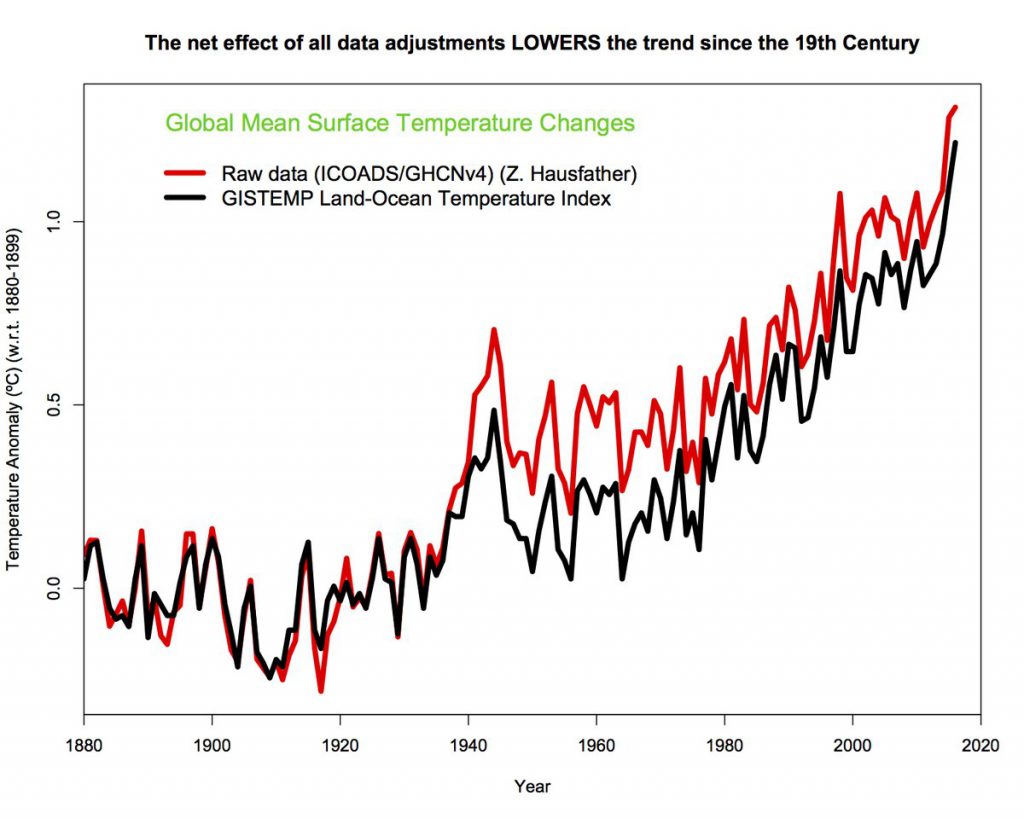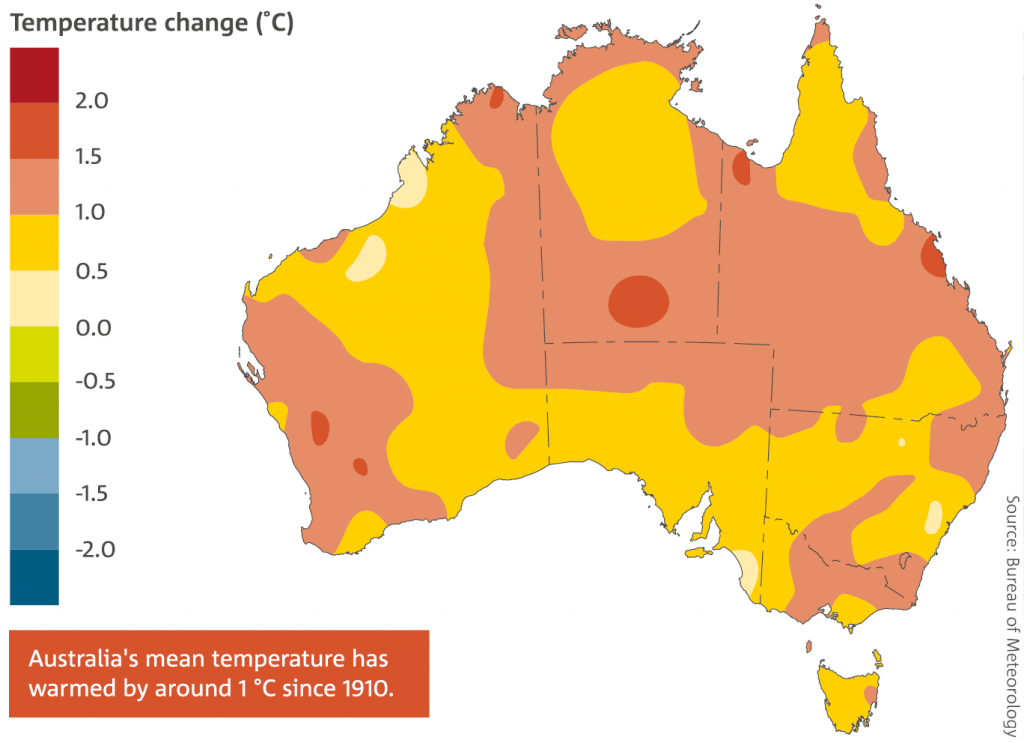
Incorrect: IPCC projections have compared well with the observed warming trend.

REVIEW
CLAIM: It may be that a tipping point will be reached soon and that the world might start to warm rapidly but so far reality has stubbornly refused to conform to the Intergovernmental Panel on Climate Change’s computer modelling. [...] So far, though, there’s no concession that their models might require revision even though unadjusted data suggests that the 1930s were actually the warmest decade in the United States and that temperatures in Australia have only increased by 0.3 degrees over the past century, not the 1 degree usually claimed.
The global warming signal over the instrumental record is far larger in the unadjusted than the adjusted record. You can’t pick and choose which adjustments you happen to like. Adjustments are essential because observation techniques have changed through time and this introduces data artefacts that are not a true portrayal of the underlying climate. We have tested, replicated, and benchmarked techniques to build confidence in the techniques deployed to account for these. The choice is stark: trust the unadjusted data we know to be wrong and that shows more warming, or trust the adjusted data which has been verified scientifically many times over to improve the estimates and shows less warming.

“reality has stubbornly refused to conform to the Intergovernmental Panel on Climate Change’s computer modelling”
Markus Donat, Research Fellow, University of New South Wales:
This claim is wrong. For example, this study by Rahmstorf and colleagues* shows how projections from past IPCC reports (future projections starting in 1990 and 2000) very well predicted the observed temperature changes since then.

Figure – Observed annual global temperature, unadjusted (pink) and adjusted for short-term variations due to solar variability, volcanoes and ENSO (red) compared to the scenarios of the IPCC (blue range and lines from the third assessment, green from the fourth assessment report). Source: Rahmstorf et al (2012)
- Rahmstorf et al (2012) Comparing climate projections to observations up to 2011, Environmental Research Letters
“data suggests that the 1930s were actually the warmest decade in the United States”
Markus Donat, Research Fellow, University of New South Wales:
It is true that the eastern part of the US is different than most of the globe with regards to temperature changes. While temperatures have been rising in most regions of the world, the eastern US is known as the so-called “warming hole” because this is one of the few regions where we do not see clear long-term warming. But using this as an argument against global warming is simply nonsense and comparable to picking one rotten cherry out of a bucket with 1,000 otherwise perfect cherries, and claiming the whole bucket of cherries is rotten.
The hot temperatures in the 1930s in the US were related to a very specific coincidence of variability patterns favouring the occurrence of hot extremes (see also this study*). But if this coincidence of variability patterns would occur today in a warmer world, the records set in the 1930s would surely be broken also in this region of the world.
- Donat et al (2016) Extraordinary heat during the 1930s US Dust Bowl and associated large-scale conditions, Climate Dynamics
“temperatures in Australia have only increased by 0.3 degrees over the past century, not the 1 degree usually claimed.”
Markus Donat, Research Fellow, University of New South Wales:
I don’t know what the source of these numbers is. The official data for Australia by the Bureau of Meteorology, based on high-quality observations, clearly shows that average temperatures have warmed by 0.9-1 degree since 1910.

Source: BOM


